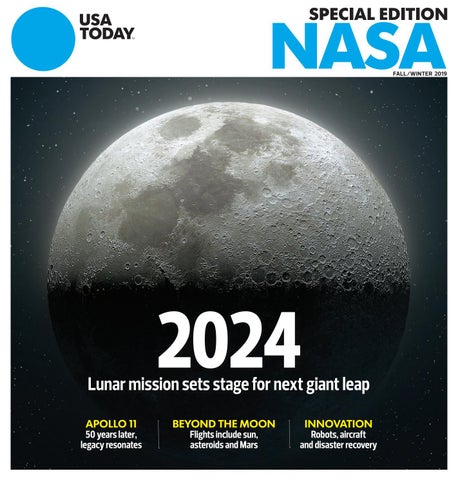
Technology has become very relevant and essential to national development been it education, industralization, and effective developed systems to be at the service of humanity without sacrifing quality.
It simply helps scientist to detect and also compare the earth with other worlds in the solar systems,Agriculture enhancement and advancement and to also detect weather forecast.
It Preferrably enhances reliable and faster Satellite communication barries and improves intelligence services for nations Globally.These Core explorations have also helps to preserve state security by controlling various publications of classified information.
As the Artemis missions journey to the moon and NASA plans for the long voyage to Mars, new navigation capabilities will be key to science, discovery, and human exploration.
Through NASA's Commercial Lunar Payload Services initiative, Firefly Aerospace of Cedar Park, Texas, will deliver an experimental payload to the moon's Mare Crisium basin.
NASA's Lunar GNSS Receiver Experiment (LuGRE) payload will test a powerful new lunar navigation capability using Earth's Global Navigation Satellite System (GNSS) signals at the moon for the first time.
GNSS refers to satellite constellations commonly used for position, navigation, and timing services on Earth. GPS—the GNSS constellation operated by the U.S. Space Force—is the one many Americans are familiar with and use on a daily basis.
"In this case, we are pushing the envelope of what GNSS was intended to do—that is, expanding the reach of systems built to provide services to terrestrial, aviation, and maritime users to also include the fast growing space sector," said J.J. Miller, Deputy Director of Policy and Strategic Communications for NASA's Space Communications and Navigation (SCaN) program. "This will vastly improve the precision and resilience of what was available during the Apollo missions, and allow for more flexible equipage and operational scenarios."
LuGRE—developed in partnership with the Italian Space Agency (ASI)—will receive signals from both GPS and the European GNSS constellation, Galileo, and use them to calculate the first-ever GNSS location fixes in transit to the moon and on the lunar surface.
NASSA however, have proven their efficiency inregards to space discoveries and explorations Utilising various spaceships and space satellites for their intensified research and experimentations.
However, Leadership has attributed another courageous decission to put preparations underway for yet another space exploration discovery to the Moon very soon which involves a team of three Americans and a Canadian to Astronites for a massive upgradement and exploitation at space(Moon).
lots of intensive trainning and assidious work attributed for few years now to ensure a successful Mission without sacrifing Quality.
